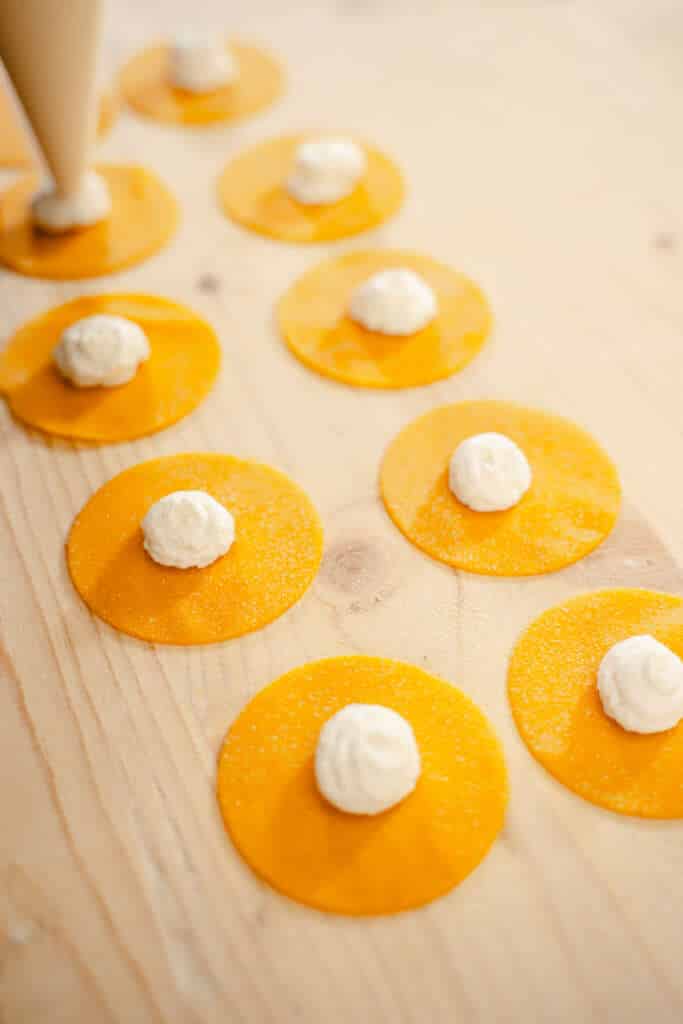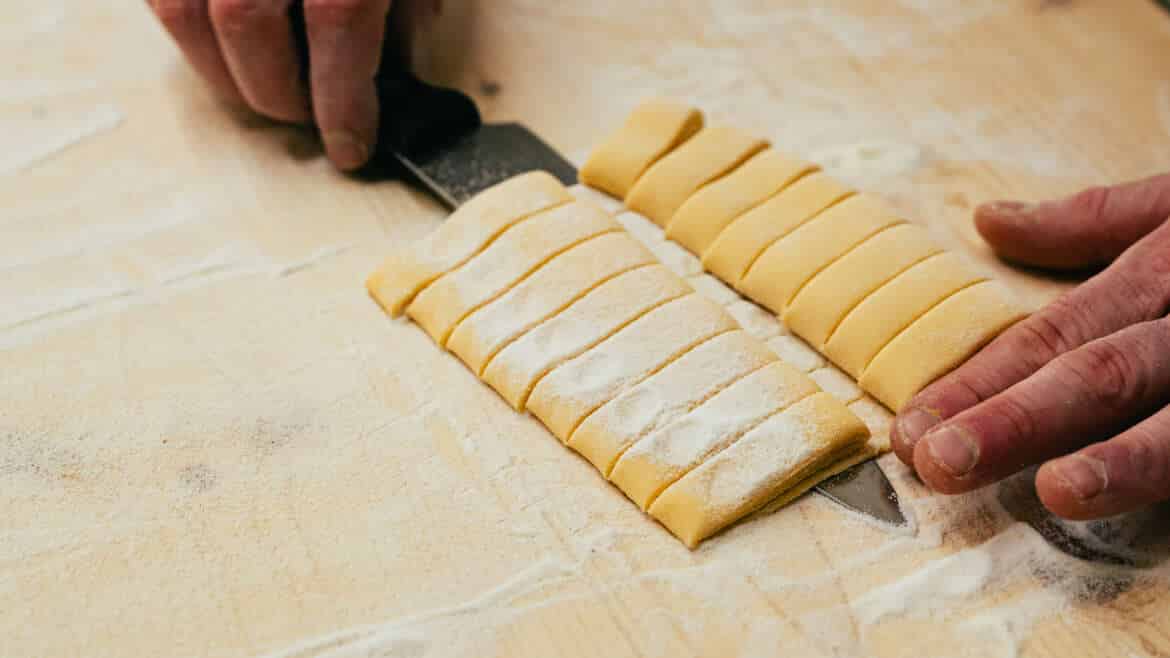Italian pasta is an immense universe of ancient recipes and techniques: today we’ll tell you about the main formats of fresh pasta.
Pasta is probably the dish that most identifies us as Italians, a symbol of our cuisine linked to a vast heritage of recipes. Although not exclusively Italian – just think of all the varieties of Chinese pasta – a certain type of pasta has become almost an identity card for an entire country, for better or for worse. But have you ever thought about how many pasta shapes exist in Italian tradition?
According to the census of the Italian Food Union, there are about 300 formats produced and consumed in Italy: some common to several territories, perhaps with different names, others specific to a particular area.
Pasta, in Italy and elsewhere
Pasta as a preparation has ancient origins: to simplify, we’ll say that from its most primordial forms, two strands developed, growing in a completely independent yet practically parallel manner, one located in various areas of China and the other in the regions of the Italian Peninsula.
For this reason, for convenience, two major historical-gastronomic strands are distinguished:
- The Italian pasta strand, which includes fresh and dry pasta, filled pasta, formats in broth, and so on, spread not only in our country but also in other areas of the Mediterranean.
- The Chinese pasta strand – which includes Beijing noodles, wontons, lamian, Cantonese noodles, and so on – spread and is known in various forms in most Asian countries.
These are two strands that are structured on completely different processing techniques and different raw materials, but also different uses and positions within the meal and food consumption in general.
Italian pasta
Rivers of words have been written about Italian pasta, so we won’t dwell much on its history, given the extensive literature available to everyone.
In our country, dry pasta is the most used – almost three-quarters of total consumption – and is produced with semolina or durum wheat flour, exclusively using the Italian extrusion technique, which also includes the drying phase.
The rest of the consumption is covered by fresh pasta, which sometimes also uses soft wheat and, as an alternative to extrusion, involves the rolling of the dough.
Naturally, over time, countless variations have been born, which also include alternative flours, fillings different from the classic ones, creative formats, and diversified consistencies.
Types of flours for pasta
Given the division between durum wheat and soft wheat, there are now many types of flours on the market with which to make pasta: these products were born mainly to meet the demand for alternatives related to gluten intolerances, specific choices, or even a certain lifestyle. In fact, on the market, you can find legume pasta, especially lentils, chickpeas, peas, often also in the form of mixes, spelt pasta, corn pasta, rice pasta, quinoa pasta, buckwheat pasta, soy pasta, hemp pasta, or mixed formulas.
The typical Italian fresh pasta
Fresh pasta also has a long tradition, mainly localized in Emilia-Romagna, but still widespread throughout the territory, which includes many types of formats. Fresh pasta can be made with or without eggs, therefore only with water and flour, and naturally contains a higher percentage of humidity than dry pasta: for this reason, it is preserved for shorter periods.
Main formats of fresh pasta
Usually rolled out with a rolling pin or with pasta machines, according to the type of production, the same goes for fresh pasta as for dry pasta: many formats can also be found in dried versions, and the names can vary according to the region or area. In this case too, we can distinguish between long and short fresh pasta:
Among the most common long fresh pastas, you can find: tagliatelle, fettuccine, maltagliati, pappardelle, tagliolini, taglierini, capellini, reginette, scialatielli, pizzoccheri, maccheroni, pici, bigoli, spaghetti alla chitarra, ciriole, strangozzi, fidelini.
Among the most common short fresh pastas, you can find: orecchiette, strozzapreti, strascinati, fusilli, eliche, trofie, cavatelli, garganelli, capunti, gnocchi, gnocchetti.
Short fresh pasta
- Orecchiette: the dome shape of orecchiette makes them perfect for enhancing traditional sauces, without fearing experimentation. Puglia and Basilicata are the regions where tasting them is a must. Durum wheat flour, water, and salt are the simple ingredients to make them by hand.
- Strascinati: a variation of orecchiette, strascinati are more elongated and open to receive the sauce.
- Trofie: a Ligurian specialty that calls for a good basil pesto, but not only that. The elongated and curled shape of trofie, typically tapered at the ends, enhances any hearty sauce, including ragù and vegetable-based sauces. Like orecchiette, it is not egg pasta but, at least in the classic recipe, fresh pasta made with flour, water, and salt. One variation involves the use of chestnut flour.
- Strozzapreti: short and twisted in Emilia-Romagna, long and thick in Central Italy, strozzapreti come in different formats depending on local tradition, always starting from a basic, very simple dough of water and flour. Suitable for all flavorful sauces of meat, vegetables, and fish.
- Cavatelli: a Traditional Agri-Food Product from Molise, cavatelli are a widely spread format of fresh pasta in the Southern regions of Italy. The dough of durum wheat semolina and water is cut and shaped to form a short pasta slightly rolled and hollowed. There are smooth and ridged versions. Perfect with meat and/or vegetable sauces.
- Maltagliati: the origin of maltagliati lies in the desire not to waste what remains of the dough, especially the edges, after obtaining perfect strips for tagliatelle. Maltagliati are therefore particularly widespread in Emilia-Romagna and are short strips and squares of pasta cut irregularly, differing in size, shape, and thickness. Excellent in broth and for preparing legume soups.
Long fresh pasta

- Tagliatelle: an ancient format of long fresh pasta, typical of Emilia-Romagna, tagliatelle fall into the category of egg pasta. The basic ingredients are indeed flour and eggs, to form a smooth dough, to be rested and then rolled out with a rolling pin. The thin sheet is finally rolled up on itself to be cut into strips and form the typical nests. The most classic dressing for tagliatelle is ragù, prepared according to the different recipes of the territory. By adding spinach to the tagliatelle dough, a green variant is obtained, and by combining the two variants in the same recipe, you will have the classic paglia e fieno (straw and hay).
- Fettuccine: are very similar to tagliatelle, but typically narrower: fettuccine are about 3-5 mm wide, tagliatelle are 7 mm wide.
- Pappardelle: although starting from the same type of flour and eggs dough, pappardelle are easily distinguished from tagliatelle and fettuccine by the size of the cut. At least one and a half centimeters wide, they are usually also thicker and rougher. Originally from Tuscany, they pair well traditionally with game sauces.
- Tagliolini: narrower than tagliatelle and very thin, tagliolini are an egg pasta particularly widespread in Piedmont, but there are also examples of this format in Emilia-Romagna and Molise. Perfect for light sauces, especially fish, they are also excellent in meat broth.
- Capellini: also known as angel hair, they are visibly different from tagliatelle, tagliolini, and other variants due to their very thin format and the lightness of the nest. Capellini are suitable for broth and delicate sauces, for preparations in white with butter and cheese, and for simple tomato sauces. Some versions do not involve the use of eggs in the dough. In this case, they fall among the dry formats of semolina pasta.
- Reginette: reginette, or mafaldine, like capellini, exist in multiple versions, with or without eggs. Fresh and egg ones can be considered variants of tagliatelle, but thicker and with a ruffled edge, perfect with vegetable and cheese-based sauces.
- Scialatielli: we move to Campania for this traditional product made with flour, fresh eggs, water, and milk. Shorter than tagliatelle, thick and hearty, scialatielli typically pair with seafood sauces. It is a relatively recent format, invented in the late seventies in Amalfi by chef Enrico Cosentino for a culinary competition.
- Pizzoccheri: a traditional fresh pasta from Valtellina, also available in dried version for easier storage, pizzoccheri are characterized by the use of buckwheat among the ingredients of the dough and by the roughness of the result, which is well suited to, according to tradition, butter and Casera cheese, Savoy cabbage, and potatoes.
Fresh filled pasta

Ravioli: in broth or dry, varying fillings infinitely and including sweet ingredients to make unusual desserts, fresh filled pasta offers truly great possibilities in the kitchen. Ravioli, cappelletti, mezzelune, tortellini, agnolotti, casoncelli, culurgiones, to the layered versions of the most classic lasagne, are just some examples of how a filled and skillfully shaped sheet can be declined according to the production area and even within the same region.

